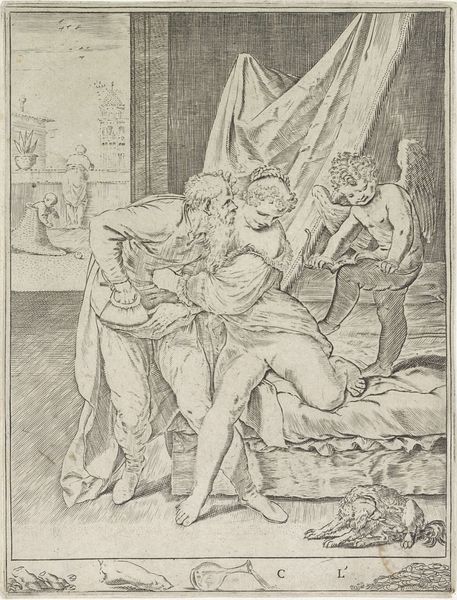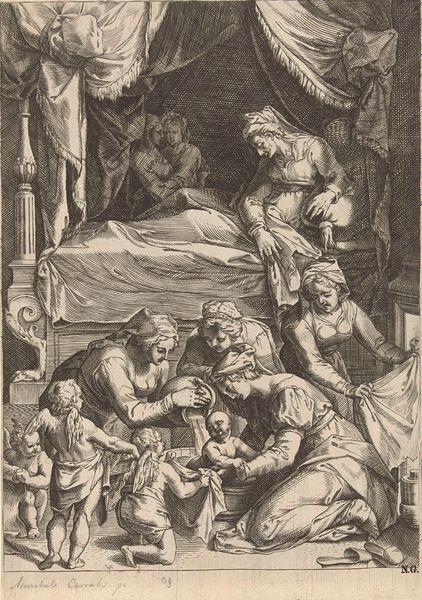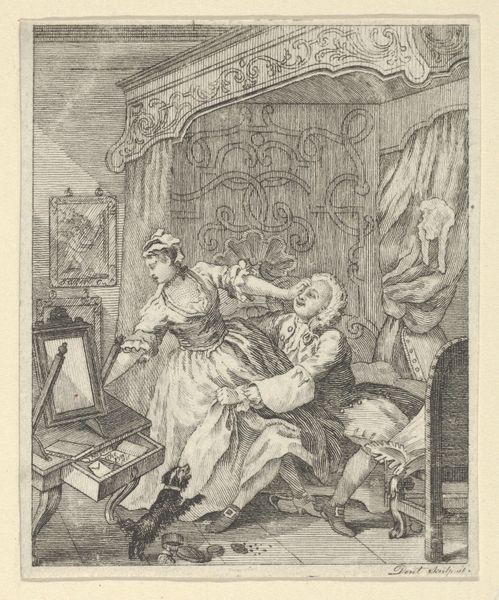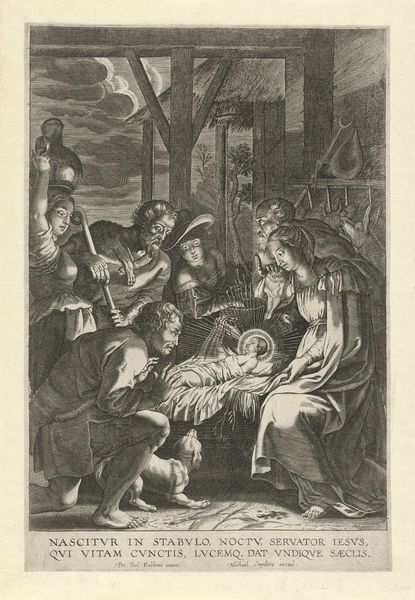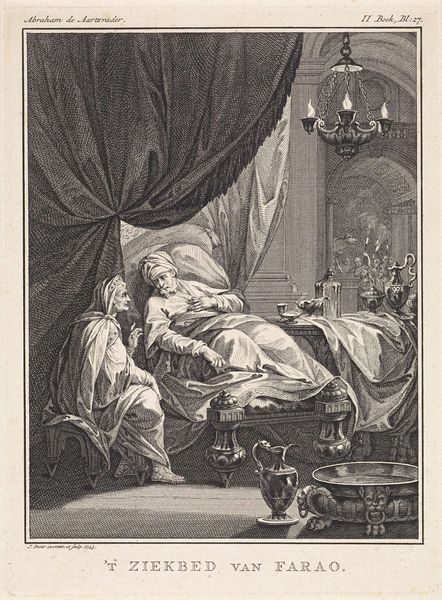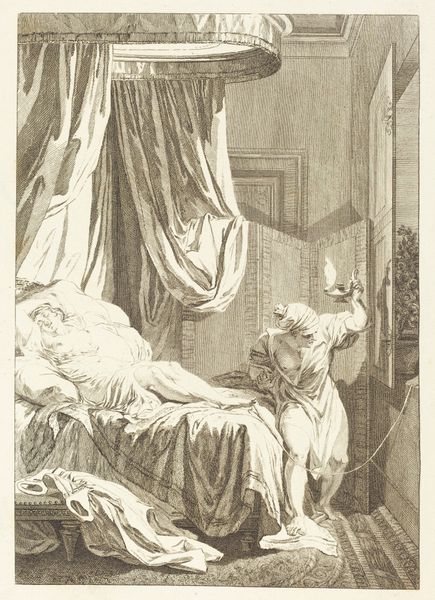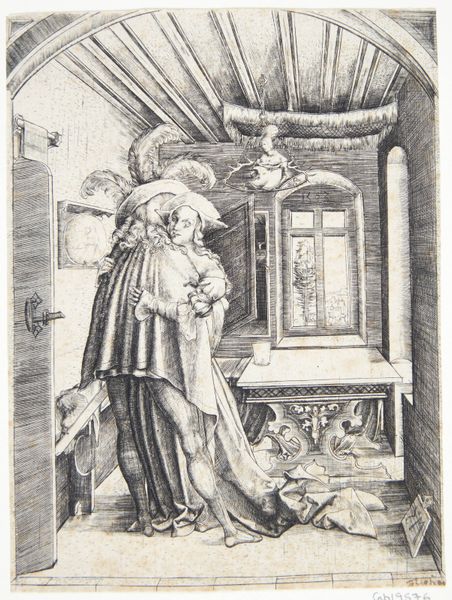
print, engraving
#
narrative-art
#
baroque
#
dutch-golden-age
# print
#
figuration
#
genre-painting
#
history-painting
#
engraving
Dimensions: 212 mm (height) x 150 mm (width) (Plademål)
Editor: So, here we have Jan Saenredam's "Night", an engraving from 1595. I’m immediately struck by how it juxtaposes the deep slumber of the woman in the foreground with the implied drama of the scene behind her bed curtains. What’s your take on this piece? Curator: It’s fascinating, isn’t it? Placed in the social and cultural context of the Dutch Golden Age, engravings like this served a crucial role. Consider its distribution: prints democratized art, allowing wider access to imagery and ideas that would otherwise be confined to wealthy patrons. Editor: That's true; prints were an early form of mass media. But how does that relate to the image itself? Curator: Think about what this 'night' scene is presenting. We see medical practices – potentially a bloodletting. These intimate, domestic scenes are placed on public view through the print medium. How might viewers in 1595 have perceived the medical details depicted and this peek into private life? Editor: Interesting! So, it's about the power of making the private public. Almost a commentary on social accessibility through art itself. Did the public believe images and propaganda at that time? Curator: Exactly. And consider the presence of symbols and moral messages imbedded in daily life. Were these medical treatments effective, or are we also viewing superstition presented to be scrutinized by those viewing? Does art play a role in furthering beliefs and power structures within social structures, too? Editor: I hadn’t thought about it that way. Seeing the engraving as more than just a scene, but also a reflection on medical belief and potential power. Thanks, that was really helpful to me. Curator: My pleasure! Considering art’s function within the public sphere gives new perspectives on these historical images.
Comments
No comments
Be the first to comment and join the conversation on the ultimate creative platform.
